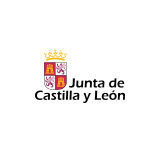Summary:
To clarify the genetic ancestry and the mitochondrial DNA (mtDNA) diversity of
the Lidia cattle breed, a 521-bp D-loop fragment was sequenced in 527 animals belonging to 70 herds
distributed across 29 lineages. The mtDNA diversity recorded was similar to that seen
for Middle Eastern breeds and greater than that recorded for the majority of European
breeds. Haplotype T3 was the most common (81%), followed by the African T1 haplotype (17%); very
low frequencies were recorded for haplotypes T and T2. The results agree with there being two major
ancestral lines for the Lidia breed, European and African, similar to that seen for other
Mediterranean breeds. A wide range of variation in haplotype frequencies was seen between the
examined lineages. Haplotype T3 was present in all those analysed; in five it was the only one
present, and in only one lineage (Miura) was its frequency lower than that of T1. T1*, a haplotype
reported in Criollo breeds and to date in only a single European breed (the Retinta breed from
Spain), was found in a single animal belonging to the Concha y Sierra lineage. Network analysis of
the Lidia breed revealed the presence of two major haplotypes: T3 and T1. The Lidia breed appears
to be more closely
related to prehistoric Iberian and Italian than to British aurochs.
|

